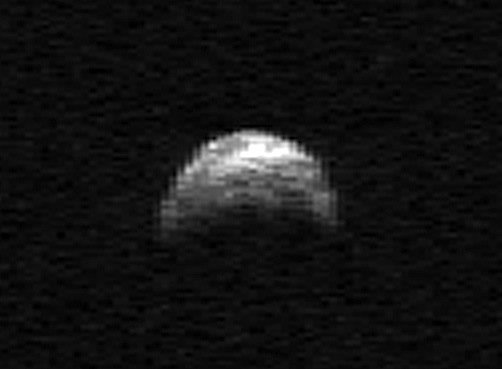
On Tuesday 8th November an asteroid called “2005 YU55” will pass within 325,000 km of Earth, briefly making it closer than the Moon. With a diameter of 400m, 2005 YU55 is the largest object to come so close for many years, and so provides a unique opportunity to observe such an object. Herschel will be providing far-infrared measurements of the asteroid, helping determine its temperature and composition.
The orbit of 2005 YU55 has been determined more accurately by radar measurements, allowing Herschel mission controllers to plan the observations as accurately as possible. The asteroid approaches from the sunward direction, and will take over a day to travel out to Herschel’s location at the L2 point. Since Herschel cannot point close to the Sun it will not be viewing 2005 YU55 until 10th November, two days after its closest approach to Earth and a few hours after its closest approach to Herschel.
2005 YU55 will be by far the closest object observed by Herschel, observed at a distance of aroun 800,000 km. The next closest object Herschel has observed is comet Hartley 2, which was more than 16 million km away when Herschel observed it in November 2010. The vast majority of objects that Herschel observes are hundreds, thousands, or even billions of light years away, and so do not move in the sky. Being so very much closer, 2005 YU55 will be moving across the sky relatively quickly, travelling around 13 km every second relative to Herschel. It would ordinarily cross Herschel’s field of view in less than a minute, and so new software has been required to allow Herschel to observe such a fast-moving object.
Most of the asteroids in the Solar System lie in the asteroid belt, between the orbits of Mars and Jupiter, and are hundreds of millions of kilometres away. Some, however, have orbits that bring them close to the Earth, though most are very small. Spacecraft have visited ten asteroids, either flying by at distances of a few hundred kilometres or going into orbit around them. With such small numbers of visitations by space probes, many telescope around the world will be observing it and the Herschel measurements will provide key information.
